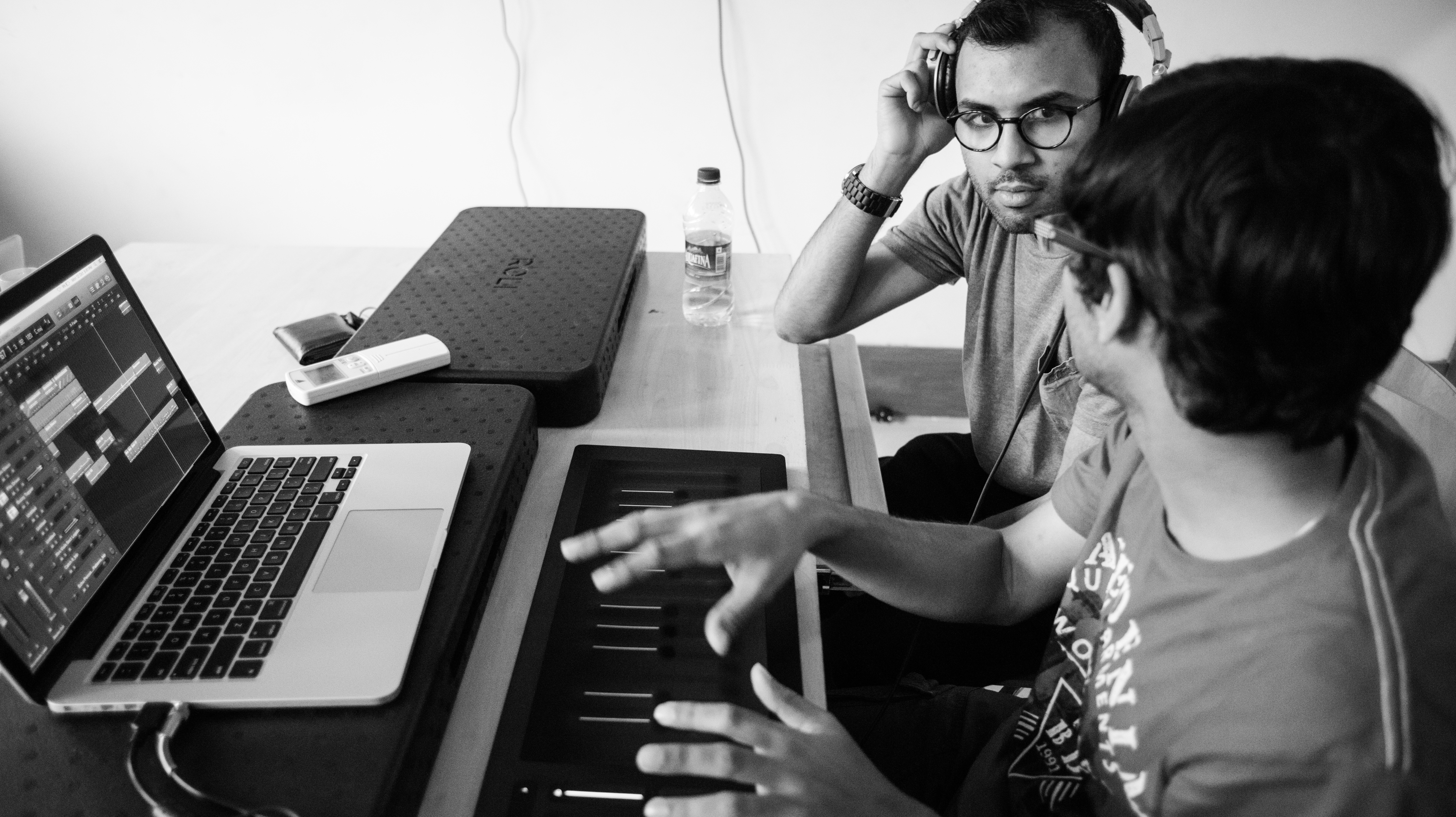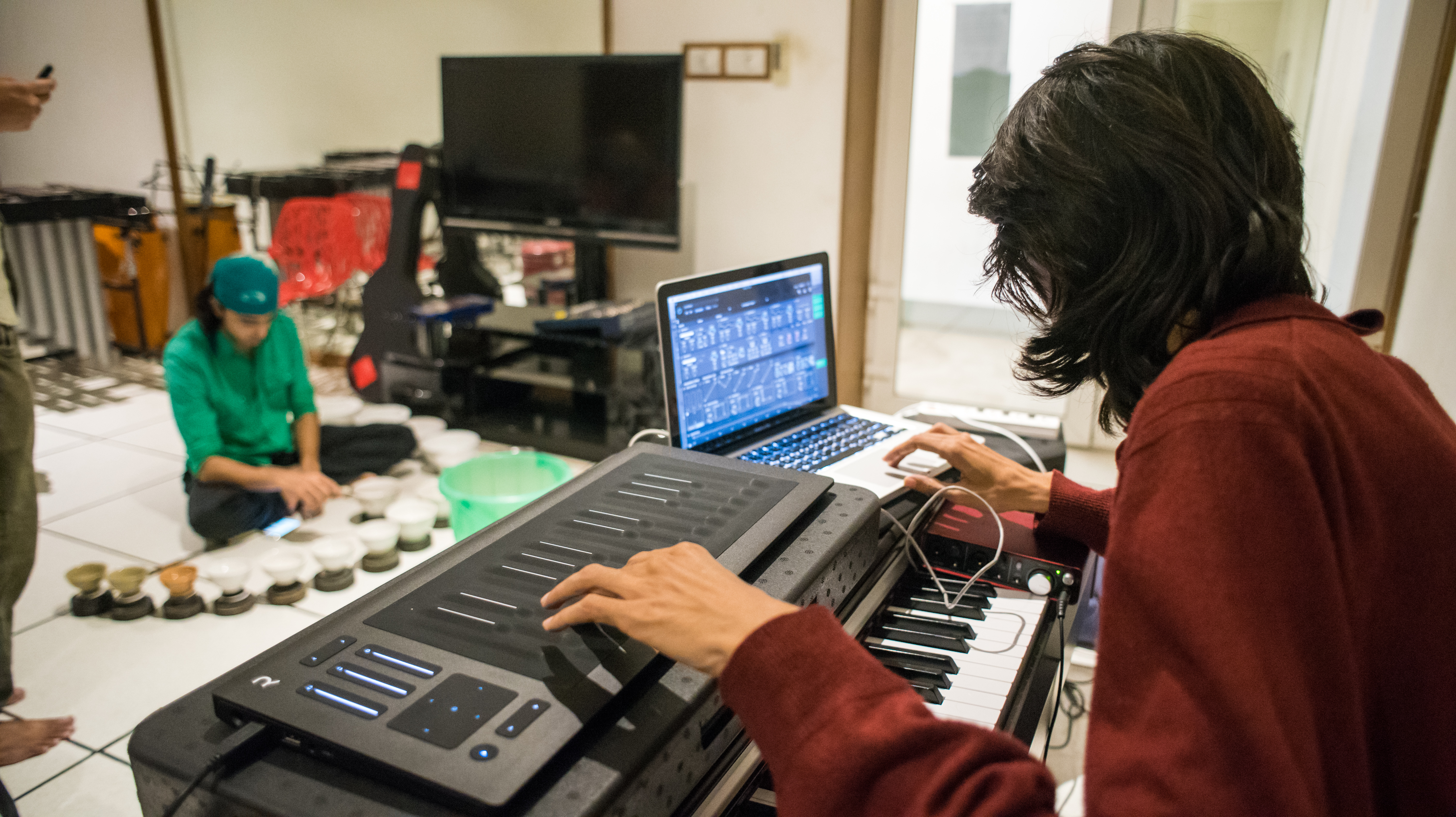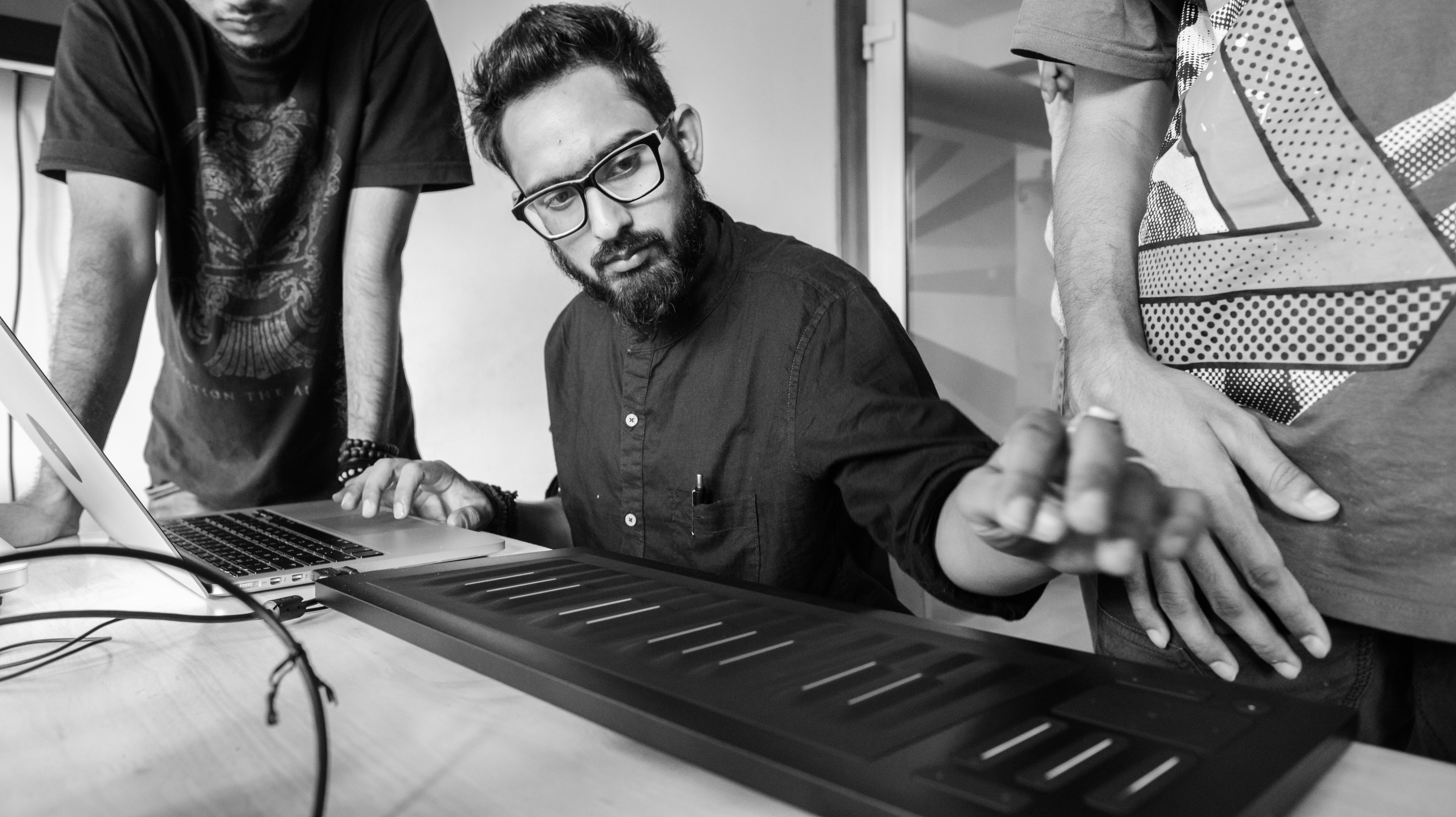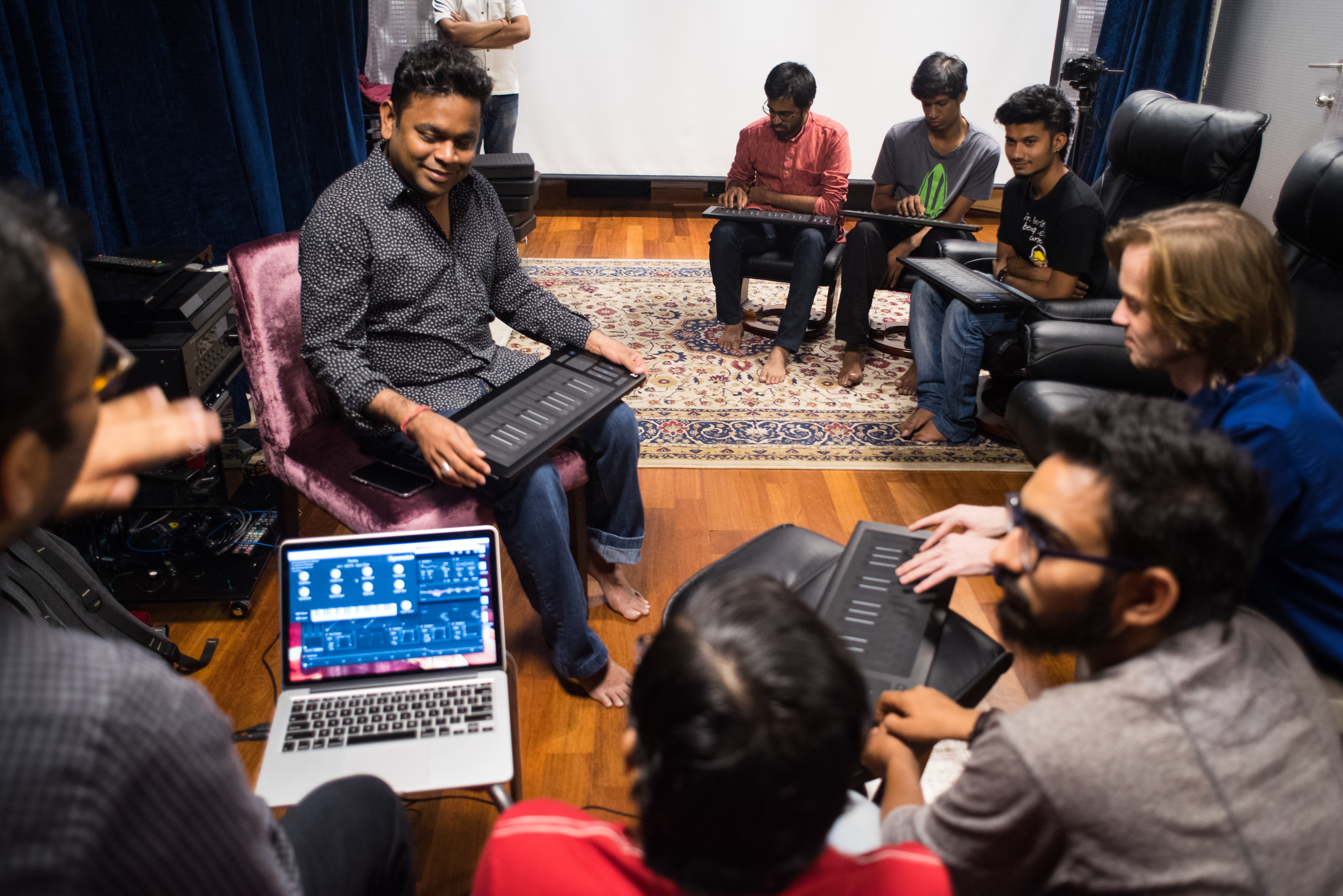The Seaboardists of Chennai
ROLI's partnership with A.R. Rahman's KM Music Conservatory

The legendary composer A.R. Rahman wanted students at the KM Music Conservatory in Chennai, India to experience the Seaboard RISE as early as possible. So six instruments were parcelled out of first batch manufactured, and before they reached music retailers – before many ROLI staff had a chance to handle one themselves – the RISEs shipped to India and were placed in the hands of Zeeshan Nabi, Rishab Nair, Gopikrishnan Parthasarathy, Pradvay Sivashankar, Rachintan Trivedi, and Pawan Ch. These are six of the brightest students at KMMC, which the A.R. Rahman Foundation supports.
This video highlights the intense days (and nights) of musical creativity that followed. On the first day, ROLI’s Manon Dave demonstrated the RISE to a packed auditorium of students and teachers. Then it was up to the six selected students to compose something within 24 hours. “They really took to the instrument straight away,” said Manon. “Within thirty minutes they were playing some classical Hindustani ragas and qawwali favourites on the woodwind and string presets.”

That exercise was just a warmup, however, for a school-wide performance at the end of five days of workshops. Each student composed a piece in whatever musical style he wished, and Manon and KMMC’s Adam Greig were on hand to help. As the students prepared, A.R. Rahman invited them to his personal studio in Chennai for a hands-on Seaboard session. The Academy-Award-winning composer of the Slumdog Millionaire soundtrack and many other cinematic scores, A.R. incorporates the Seaboard GRAND into his concerts around the world.
One student composed a piece of classical Indian music on the RISE accompanied by the jal-tarang, an ancient instrument that is played by tapping ceramic jars filled with water. Another student opted for a thickly textured electronic composition. No two of the students’ performances were alike. The audience in the KMMC performance hall was rapt listening to an instrument that no one – not even the performers themselves – had seen until five days before. For that week in October the RISE was perhaps the newest instrument in the world. Yet it was working in harmony with the 2,000-year-old jal-tarang, and it carried the melodies of carnatic music as expressively as an instrument made of wood and wire.

Our workshops with KMMC were amazing to witness from London. It showed the team how quickly musicians can pick up a RISE and improvise beautiful pieces of music on it. It also showed us the sheer versatility of the instrument, which suits the rapid, microtonal bends of Indian classical music just as much as it suits the synthetic progressions of electronic music.
“Whether they’re playing electronic dance music or traditional Qawwali music, KMMC students’ creativity on the Seaboard is an inspiring testament to how musicians from all over the world can make all kinds of expressive music with our new instrument,” said Roland Lamb, ROLI founder and CEO. “We’re honored to work with KMMC in India — and alongside KMMC graduates in London — to open new possibilities for the next generation of Indian musicians.”
The six RISEs are staying at KMMC, and the school has been incorporating the instrument into the curriculum. Take a look at just one example of what KMMC students have been creating with them in this video. You’ll recognize most of the tunes!

Composer A.R. Rahman plays the Seaboard RISE with KMMC students.
Join the ROLI community